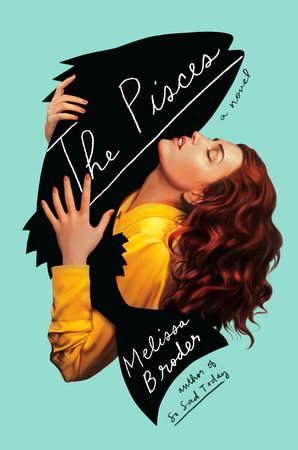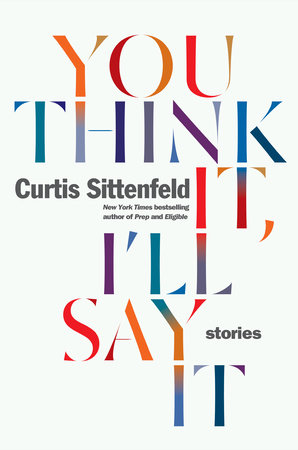From the moment that Phoebe Waller-Bridge’s gaze first penetrates the camera, it’s evident that Fleabag will be one emotional gut-punch after another. The series follows the unnamed titular character as she copes with the death of her mother and the unexpected loss of her closest friend, poking fun at the bleakness of her situation, and the destructive coping mechanisms it has drawn her to along the way.
The appeal of Fleabag comes from the tension between the audience’s external perspective on Fleabag and her behavior (frequently awful!) and the vulnerable glimpses we’re afforded into her internal world when she breaks the fourth wall and addresses the viewer. Whether she’s falling in love with a (hot celibate) priest, trading passive-aggressive barbs with her former godmother (now stepmother-to-be), or punching her brother-in-law in the face (he deserved it), Waller-Bridge balances keenly-observed interpersonal dynamics with an almost unparalleled intimacy between the audience and the main character.
If you’re looking for something to do in between rewatches of Fleabag, these books will fulfill your desire for narratives exploring complex relationships, self-awareness, and grief.
Things To Make and Break by May-Lan Tan
May-Lan Tan’s short stories are about the dynamics of interpersonal relationships. A couple stays the night in a hotel together as something of an endurance exercise, recommended by a therapist after one partner discovers that the other sees a professional domme. Twin brothers who are sleeping with the same girl attempt to navigate her memory loss after a car accident. A woman seems to finds her boyfriend’s ex-girlfriends the most interesting thing about him, reveling in the fact that she’ll one day be among them. Tan’s writing style enlivens even the most mundane of observations and makes the most bizarre of premises seem quotidian.

Tonight I’m Someone Else by Chelsea Hodson
Throughout her first collection of essays, Hodson interrogates the relationship she has to beauty, money, lust, and the intersection of the three. “A theory my friend has: sleepovers are where girls learn to wake up in love. Remember when we knew our friends’ bodies as well as our own?” writes Hodson, articulating the unique discomforts of womanhood, without ignoring the rewarding moments, too.

The Guardians by Sarah Manguso
“What do I regret—that in the end he didn’t need me, and now I can’t need him?” Sarah Manguso asks, succinctly articulating the grief she feels after the death of a friend that is the root of the book. Through the course of The Guardian’s 122 pages, Manguso tosses and turns over this loss, questioning whether or not the death really was a suicide or the result of a faulty medication’s side effects. Much like Fleabag, or any good eulogy, this grief isn’t grounded only in ruminations on the death and its aftereffects, but through vignettes of what made their friendship so strong. These memories are just as humorous as her recollection of his struggle with mental health is harrowing—at one point she recalls his infamously large dick, which she’ll never have the chance to glimpse now.

Mean by Myriam Gurba
Crafted with a specificity of language that only a poet could muster, Mean is a reckoning with racism, misogyny, and homophobia by way of a coming of age tale. Though these are heavy subjects, Gurba approaches them with her striking dark sense of humor, as when she describes her period as “birthing blood clots”and worries that she’ll burn in hell for finding Anne Frank’s Diary boring. Just as Waller-Bridge’s accomplishes with Fleabag, Gurba’s sharp wit draws you in, giving her room to candidly consider the way her identity as a queer, mixed-race Chicana has shaped her life.

The Pisces by Melissa Broder
When I first picked up The Pisces, a novel about a depressed woman who falls in love with a merman, I was expecting to be dropped in the story of a life unimaginably different from mine. Yet even by the first page, it was clear that this wasn’t the story that Broder had written. I wound up underlining half of the book, so stricken by Broder’s ability to so skillfully nest the universal experience of loving what’s wrong for you within such an outlandish outer shell. The pull of Broder’s merman is not so much a result of his supernatural form but of his undeniable unavailability. Sound like a hot priest we know?

You Think It, I’ll Say It by Curtis Sittenfield
In her story collection You Think It, I’ll Say It, Curtis Sittenfield adeptly explores power dynamics and the minute indignities that result of them. A Regular Couple, one of the shining stars of the collection, zeroes in on an adult woman’s chance run in with a high school bully as she attempts to enjoy her honeymoon at a resort. As you wait for the expected explosion between them, Sittenfield heightens the tension between the protagonist and her husband. While she’s a morally corrupt money-making lawyer who made the news for representing a rapist, he works as a nonprofit immigration lawyer. The story hits its crescendo as the two relationships crumble, if only momentarily. Sittenfield presents such nuanced characters that you leave a story not sure who exactly you were rooting for, if only because you were made to root for every character.

You Too Can Have A Body Like Mine by Alexandra Kleeman
The main characters of Kleeman’s debut novel are named A, B, and C—the protagonist, her best friend, and her boyfriend, respectively—because of this, there’s no choice but to immediately acclimate within their peculiar, expertly crafted world. Everything in the book seems as though it’s taking place in an alternate dimension, a just slightly heightened version of our own reality. In reading the book, one becomes addicted to Kleeman’s style, just as the characters are addicted to ideal beauty standards and being an active member of consumerism (if those two aren’t one in the same). We follow A, B, and C as they gravitate closer to porn obsessions, a corporate cult, and reality TV, among the myriad other distractions that populate our everyday lives.
The post What to Read After Watching “Fleabag” appeared first on Electric Literature.









